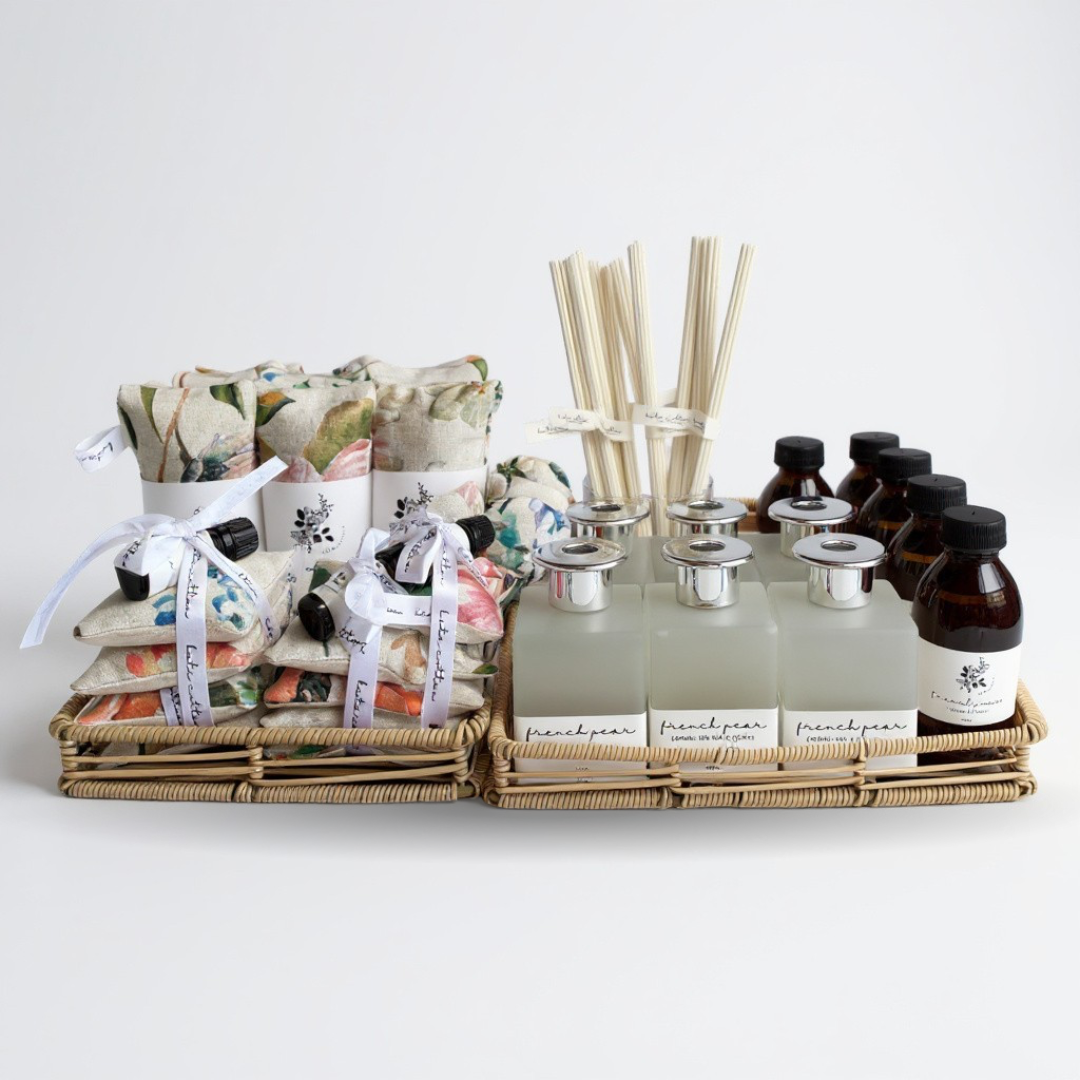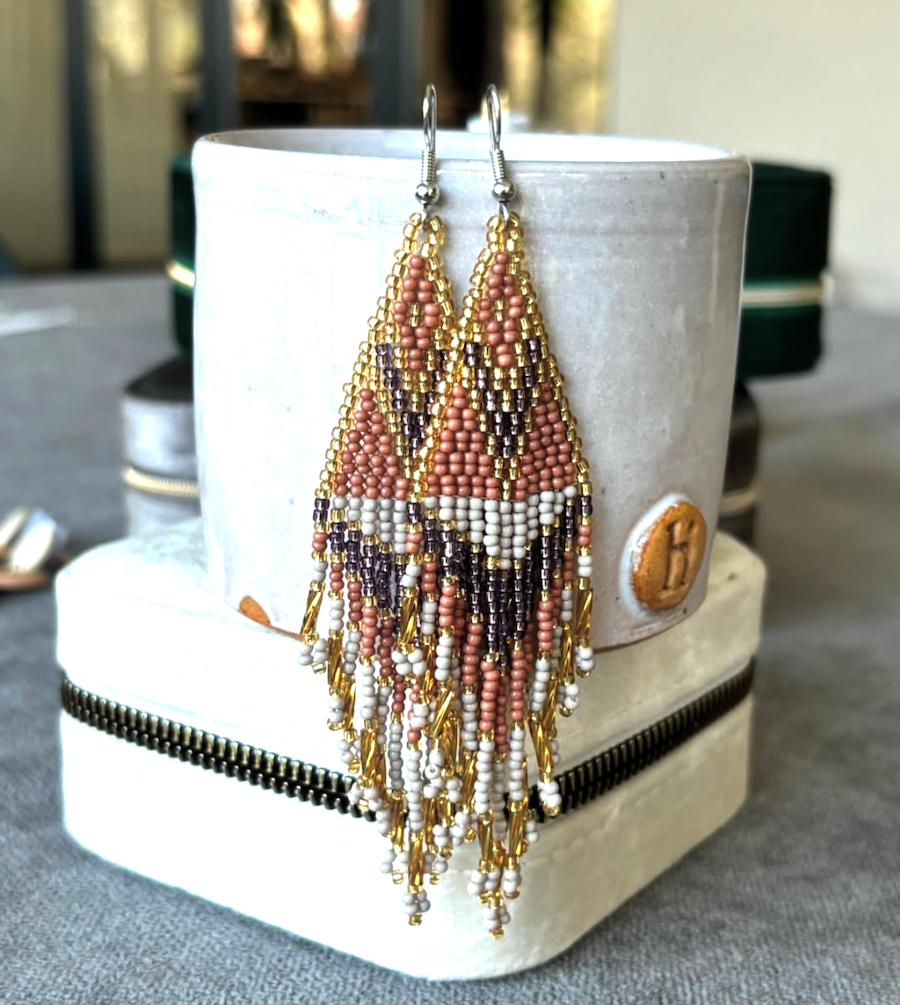About sterling silver
Pure silver, also called fine silver, is relatively soft, very malleable and easily damaged, so it is commonly combined with other metals to produce a more durable product. The most popular of these alloys is sterling silver, which consists of 92.5% silver and 7.5% copper. The result produces the combination of 92.5% silver that is seen stamped on jewellery pieces as 925.
Although many metals can make up the 7.5% non-silver portion of sterling, centuries of experimentation have shown copper to be its best companion, improving the metal's hardness and durability without affecting its beautiful colour. We, at Home Industry prefer this alloy too as it also allows us to intentionally darken some areas to enhance some subtle surface detailing and stamping marks. The small amount of copper added to the silver has very little effect on the metal's value. Instead, the price and value of a silver item is affected mainly by the design, labour involved in making the item, and the skill of the craftsperson.
Tarnish
All sterling silver will tarnish over time. This is a normal process. Tarnishing is therefore not a manufacturing fault.
Tarnish is a surface phenomenon, that is self-limiting, unlike rust. Only the top few layers of the metal react, and the layer of the tarnish seals and protects the underlying layers from reacting.
Contrary to what most people believe, it’s not the silver in sterling silver that oxidizes and tarnishes; it’s the alloy metals such as copper. Everyone has seen the patina or tarnish that copper produces over time, so they should understand how adding such a metal to silver would cause it to oxidize in the same way.
It first appears as a golden hue on sterling silver, then, quickly turns to black.
The tarnish will happen much faster if it is left in the open air and humidity for extended periods of time, or when exposed to salty air, naturally occurring hydrogen sulphide in the air, household chemicals, chlorinated water, and contact with any products containing sulfur, such as rubber bands, latex, wool, some papers and foods which contain sulphur (e.g., mayonnaise, eggs, mustard, onions etc). Lotions, cosmetics, hair spray, hair products, and perfumes are also “enemies” of silver and will accelerate tarnishing.
Apart from outside influences, each individual’s skin chemistry is unique and varying constantly. The skin is the body’s largest organ and it’s acidity (ph) and moisture levels change in response to humidity, diet (eg. eating too many eggs), certain vitamin and prescription medicine consumption, exercise and natural perspiration can all contribute to increased tarnishing of silver.
Having mentioned all the possible causes of tarnish on silver we should not generally be overly concerned. In most cases, naturally occurring tarnish on silver jewelry is kept under control by the self-polishing action of the jewelry wearing on a person's body skin or fingers, and natural skin oils provide a barrier against tarnishing, and often no special actions are ever required to keep the piece looking 'silver', so Home Industry strongly encourages you wear your jewels every day - it works… and allows you to show off your style in every occasion!
We do understand, however, how concerning a tarnishing reaction can be, and hope that these notes are useful to you.
With proper care, your fine quality sterling silver will last a lifetime.
Preventative care
Remove jewellery during tasks – When performing manual tasks, remove your jewellery to prevent physical damage or exposure to chemicals or cleaning fluids. Bleach can literally destroy jewellery so avoid it at all costs! Some tasks that should be avoided when wearing jewellery include kitchen work, gardening, cleaning the house and other common tasks.
Put jewellery on AFTER applying makeup – Cosmetics, hairspray, perfumes and lotion can contain chemicals that can often damage jewellery. Putting jewellery on after applying these materials will limit exposure to jewellery and any potential damage. There’s a reason generations of women have been getting dressed with jewellry added last, as a finishing touch!
Don't wear jewellery in swimming pools and spas – Chlorinated water can react with the metals found in jewellery, causing colour changes and even structural damage. Sunlight (UV light) also increases tarnishing. As a result it's a good idea to remove jewellery before sunbathing or entering the pool or spa.
Storage
Please be aware that many display units and packaging boxes may contain sulphur, which interacts and tarnishes sterling silver. As exposure to air tarnishes it, storing silver in airtight zip-lock plastic bags with anti-tarnish strips is a great preventative measure. Just make sure you don’t store multiple jewellery pieces in the same bag: silver is a soft metal, so the individual pieces can scratch each other. If you can’t use plastic bags, try to make sure that the storage area has low humidity. You can also place a piece of chalk, a packet of activated charcoal, or a container of silica gel in the storage area to minimize tarnish.
Polishing
We at Home Industry recommend that you do not use commercial silver cleaners and dips on our intentionally oxidized jewellery as it could remove the purposefully darkened areas (this detailing can be lost with excessive cleaning and polishing). — keep to a simple polishing cloth instead.
If the tarnish is not too severe, you can use a special silver cloth to polish your items, but a lint-free 100% cotton flannel, microfiber, or other soft, nonabrasive cloth will do as well. Silver is soft and can become scratched easily. Do not use paper towels, tissues, polyester and coarse fabrics to polish your jewellery as they often contain wood and synthetic fibres, that can scratch the silver.
Change to a different section of your cloth frequently to avoid placing tarnish back on the silver.
If the tarnish is excessive, make a paste of baking soda (bicarbonate of soda not baking powder!) and water and use a clean cloth to apply a pea-sized amount to the silver and polish. Then polish with a polishing cloth.
Well-cared-for silver jewellery can give you many years of pleasure and enjoyment and we expect they will some day become family heirlooms!





